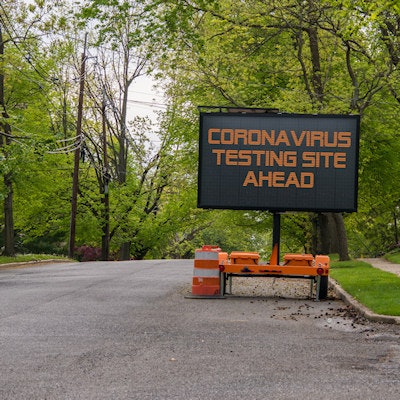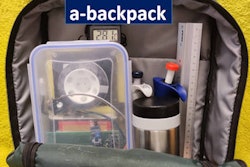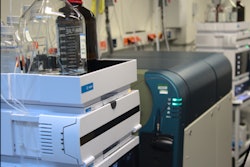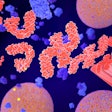
A COVID-19 testing strategy that sends community workers door to door based on a sampling method borrowed from machine learning appears to be a more effective way to reach vulnerable populations than standard public health surveillance, according to a new study published on August 27 in JAMA Health Forum.
The setting for the study was East San Jose, CA, where the low-income Latinx community has been disproportionately affected by COVID-19. In Santa Clara County, where East San Jose is located, Latinx individuals constitute less than 26% of the population but account for more than 56% of COVID-19 cases.
Furthermore, local health authorities have had difficulty directing COVID-19 testing to where it is needed most. Despite more than 60% of the population in East San Jose being Latinx, less than half of visitors to the two closest COVID-19 testing sites were Latinx.
In the current study, the researchers from Stanford University and the Santa Clara County Public Health Department sought to understand the most effective means to reach vulnerable subpopulations and allocate testing resources to overcome social and logistical barriers to access.
Specifically, they investigated the best way to direct the efforts of door-to-door health workers, known as "promotores de salud," recruited from the local community. During the two-month study period, the promotores went door to door in the community and observed self-collection of anterior nasal swab samples for SARS-CoV-2 reverse transcription polymerase chain reaction tests.
3 protocols for directing door-to-door testing
To directly engage community members at home and deliver tests, the researchers compared three different protocols for directing the promotores to specific neighborhoods. The protocols were then evaluated in terms of how many positive tests they produced, with more positive tests indicating a more successful protocol in terms of resource allocation. The three protocols tested were as follows:
- Index area selection: This protocol assigned workers to areas with a high number of confirmed COVID-19 cases per capita, with the goal of testing individuals who have been in contact with infected individuals. This approach represents standard public health surveillance, which focuses on testing of symptomatic or exposed individuals.
- Local knowledge: The second protocol used the promotores' local knowledge to identify where testing is needed. To implement this protocol, the researchers set aside two days per week for the promotores to use their own judgment as to where to conduct testing based on their awareness of local conditions such as social gatherings.
- Uncertainty sampling: This technique was borrowed from the machine-learning literature, where it is also known as upper confidence bound sampling. This protocol selects neighborhoods with the highest potential positivity rate, accounting for uncertainty. This approach is not conventionally used in public health.
The basic insight of uncertainty sampling is that simply selecting neighborhoods based solely on their positivity rate (number of positive tests divided by the number of total tests during the previous seven days) is not an effective strategy since it overlooks areas that may have a low positivity rate simply due to randomness or low testing volume.
Instead, neighborhoods are selected based on the upper confidence bound (95% confidence interval) of the mean positivity rate. The upper confidence bound is used because a test in a neighborhood with a potentially high positivity rate yields more useful information, in terms of reducing uncertainty, than yet another test in a neighborhood where the positivity rate is already accurately known.
Results of study
In total, 785 tests were performed by the promotores, of which 29 were discarded, leaving 756 test results available for analysis. Of the 756 tests, 61.1% were performed on women.
When the results were analyzed at the end of the two-month study period, they showed that the uncertainty sampling protocol yielded the most effective allocation. The researchers also calculated the response rate, defined as the fraction of visits resulting in the collection of at least one test, for each protocol. Here, the local knowledge protocol yielded the most responses.
| Success of door-to-door COVID testing by sampling protocol | |||
| Metric | Index area selection | Local knowledge of promotores | Uncertainty sampling |
| Positivity rate | 2.6% | 6.4% | 10.8% |
| Response rate | 10.7% | 50.5% | 23.4% |
Finally, the researchers addressed the question of whether the general strategy of door-to-door intervention by the promotores was successful at reaching the targeted Latinx population regardless of the survey protocol used. To test this, they compared their door-to-door demographic data to data from two local COVID-19 test sites: a drop-in testing site at a church and an appointment-only testing site at the county fairgrounds.
The demographic data showed that a far higher percentage of those undergoing testing via the door-to-door intervention were Latinx compared to the testing sites. Furthermore, the individuals visited at home declined to report their race at a much lower rate, perhaps indicating greater trust in the promotores.
| Demographic data at testing sites vs. door-to-door visits | ||
| Testing site | Latinx rate | Decline to report race |
| Church | 49.0% | 27.8% |
| Fairgrounds | 30.7% | 16.1% |
| Door-to-door visit | 87.6% | 7.9% |
"These results have important implications for public health and addressing the deep social disparities of COVID-19," the authors wrote. "The protocols are currently being extended for improving vaccine administration in areas characterized by vaccine hesitancy. This approach may also have potential for a range of other public health interventions and testing, such as surveillance for lead exposure among children and testing for other communicable diseases."
However, the authors acknowledged that it is unknown how the use of the promotores, who had deep community roots, would translate to other communities that lacked a similar network.



















